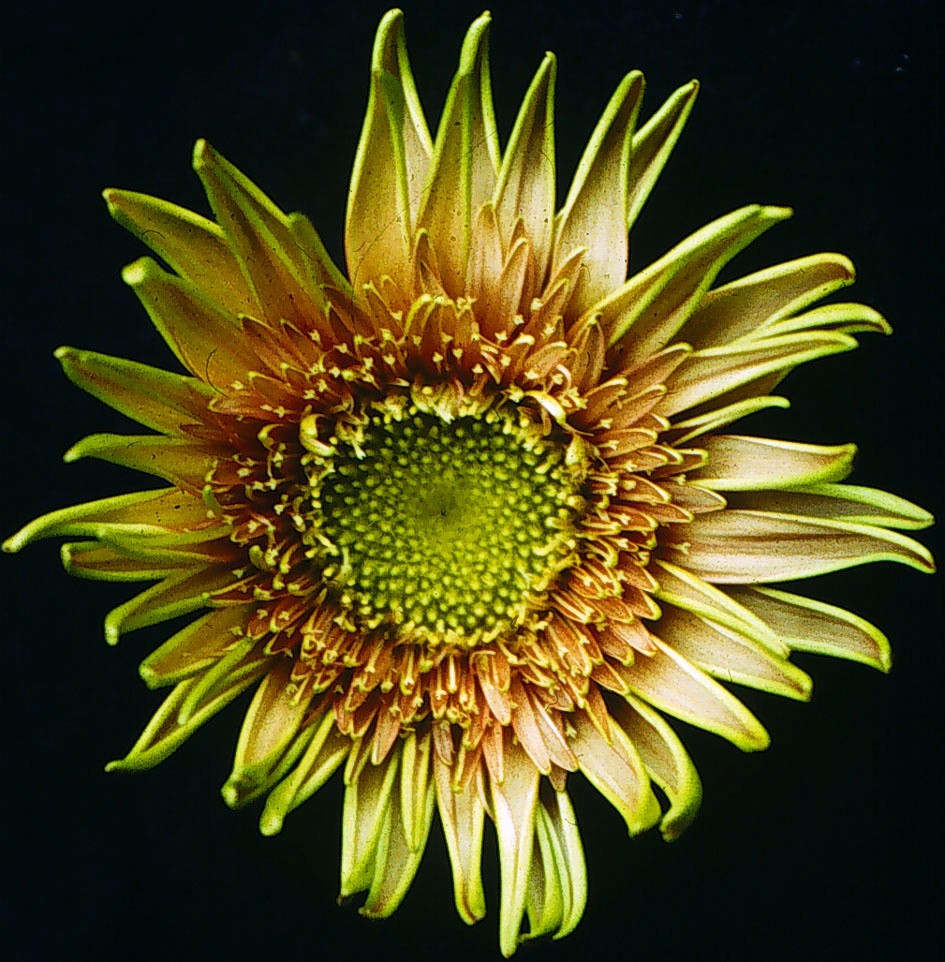 The basic architecture of a flower is described by the classical ABC model of flower development (Coen & Meyerowitz, 1991). According to the model, organ identities in different floral whorls (sepals, petals, stamens and carpels) are specified by A, B and C functions that function either alone or in combinatorial manner. Later on, the model has expanded to include also D and E functions. Our major aim has been to explore whether these functions encoded by MADS box genes are conserved in gerbera that has very specialized flower and inflorescence structure compared to classical models of flower development. To address this question, we have isolated more than 20 MADS box genes from gerbera, made detailed phylogenetic and expression analyses for them as well as used genetic transformation as a tool to verify their functions. Moreover protein-protein interaction studies have reinforced our functional analyses. Some major conclusions:
The basic architecture of a flower is described by the classical ABC model of flower development (Coen & Meyerowitz, 1991). According to the model, organ identities in different floral whorls (sepals, petals, stamens and carpels) are specified by A, B and C functions that function either alone or in combinatorial manner. Later on, the model has expanded to include also D and E functions. Our major aim has been to explore whether these functions encoded by MADS box genes are conserved in gerbera that has very specialized flower and inflorescence structure compared to classical models of flower development. To address this question, we have isolated more than 20 MADS box genes from gerbera, made detailed phylogenetic and expression analyses for them as well as used genetic transformation as a tool to verify their functions. Moreover protein-protein interaction studies have reinforced our functional analyses. Some major conclusions:
- The ABC model of flower development principally applies to Asteraceae. It proves the predicted roles for some of the isolated genes as B- and C function genes. Furthermore, genetic transformation has revealed roles for MADS-box genes that originally were anonymous for their function.
- Gerbera B-class gene GGLO1 confers to classical B function and is involved in defining petal and stamen development.
- Two B genes, GDEF1 and GDEF2 differ in their functions. GDEF2 mediates the classical B-function together with GGLO1 while the TM6-like gene GDEF1 is redundantly involved in regulating stamen development.
- Gerbera has two C-class genes, GAGA1 and GAGA2 which both define stamen and carpel identities.
- Gerbera E class genes, GRCD1 and GRCD2 cause homeotic alterations in stamens and carpels, respectively. Unlike redundant SEPALLATA genes in Arabidopsis, they have whorl specific functions in gerbera flowers.
- In addition GRCD2 is involved in regulation floral meristem and inflorescence meristem determinacy.
- Gerbera has altogether six SQUAMOSA/APETALA1/FRUITFULL -like genes. However, none of them are likely to encode the floral A function. We have specifically shown that GSQUA2 is involved in meristem transition affecting flowering time.
- Microarray analysis of very early stages flower primordia development revealed that many MADS box genes are differentially expressed in ray and disc flowers. Quantitative and qualitative expression differences may lead to formation of specific protein complexes that regulate differentiation of individual flower types.
PUBLICATIONS
- Yu et al., Plant J 16: 51-62 (1999) http://dx.doi.org/10.1046/j.1365-313X.1999.00351.x
- Kotilainen et al., Plant Cell 12: 1893-1902 (2000) http://dx.doi.org/10.1105/tpc.12.10.1893
- Uimari et al., PNAS 101: 15817-15822 (2004) http://dx.doi.org/10.1073/pnas.0406844101
- Laitinen et al., BMC Plant Biology 6: 11 (2006) http://dx.doi.org/10.1186/1471-2229-6-11
- Broholm et al., J. Exp. Bot. 61: 75-85 (2009), http://dx.doi.org/10.1093/jxb/erp279
- Ruokolainen et al, BMC Plant Biology 10: 128 (2010) http://dx.doi.org/10.1186/1471-2229-10-128
- Ruokolainen et al., BMC Plant Biology 10: 129 (2010) http://dx.doi.org/ 10.1186/1471-2229-10-129
- Ruokolainen et al., Annals of Botany 107: 1491-1499 (2011) http://dx.doi.org/10.1093/aob/mcr112
